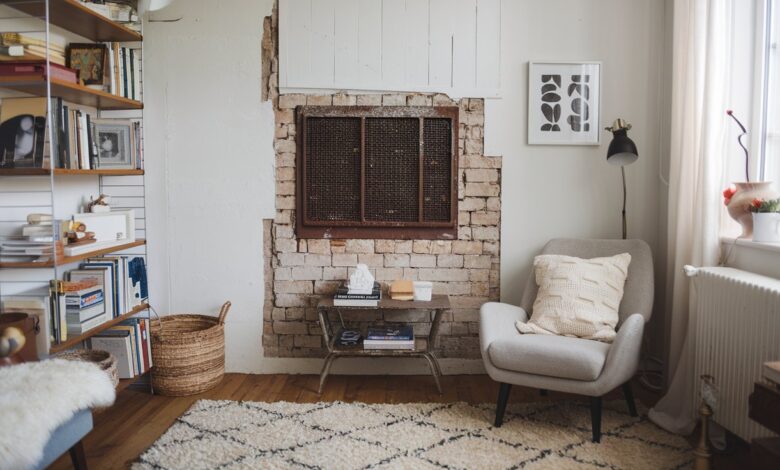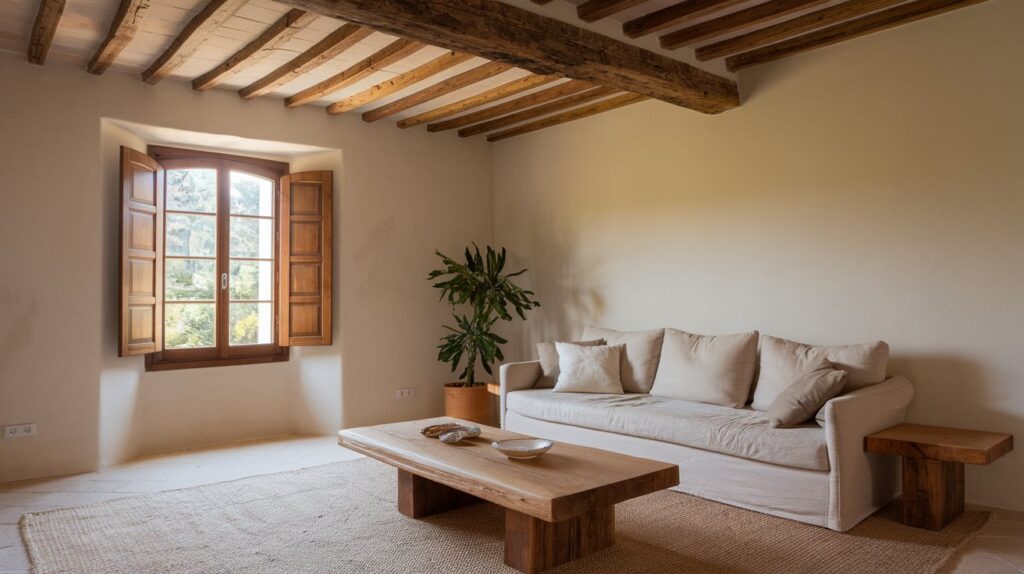Wall Vent Covers: The Ultimate Guide to Style and Function

Have you ever walked into a room and noticed an outdated, rusty vent cover that sticks out like a sore thumb? I did, in my first apartment—a tiny studio where a clunky metal vent cover clashed with my carefully curated decor. It was an eyesore, and I quickly realized that wall vent covers are more than just functional; they’re a design statement. These small but mighty home components balance aesthetics, airflow, and practicality, making them a key player in home improvement.
In this guide, we’ll dive deep into everything you need to know about wall vent covers—types, materials, installation tips, and how they can transform your space. Whether you’re a homeowner, renter, or DIY enthusiast, this article will help you choose the perfect vent cover while boosting your home’s style and efficiency. Let’s get started!
What Are Wall Vent Covers?
Wall vent covers, also called air vent covers or wall registers, are protective and decorative panels placed over HVAC (heating, ventilation, and air conditioning) system openings. They direct airflow, protect ductwork, and enhance a room’s appearance. Available in various shapes, sizes, materials, and designs, they’re both functional and stylish.
From my experience renovating my home, I learned that a well-chosen vent cover can tie a room together, much like a piece of art or furniture. They’re not just about covering a hole in the wall—they regulate temperature, improve air quality, and elevate your interior design game.
Why Should You Care About Wall Vent Covers?
Wall vent covers serve multiple purposes:
- Aesthetic Appeal: A sleek, modern vent cover can complement your decor, while an outdated one can ruin the vibe.
- Airflow Efficiency: Properly designed covers ensure optimal air circulation, keeping your home comfortable.
- Durability: High-quality materials like steel or wood withstand wear and tear.
- Safety: Covers prevent debris, dust, or small objects from entering ducts, protecting your HVAC system.
I once ignored a cheap plastic vent cover in my living room, thinking it was “just a vent.” Big mistake! It cracked within months, letting dust clog the ducts, which meant costly HVAC maintenance. Lesson learned: investing in a quality vent cover saves money and hassle in the long run.
Types of Wall Vent Covers
Wall vent covers come in various styles to suit different needs and tastes. Here’s a breakdown of the most popular types:
1. Standard Metal Vent Covers
- Description: Made from steel, aluminum, or brass, these are durable and budget-friendly.
- Best For: Minimalist homes or high-traffic areas like hallways.
- Pros: Affordable, sturdy, easy to clean.
- Cons: Can look plain unless painted or customized.
2. Decorative Vent Covers
- Description: Feature intricate patterns, like Victorian or geometric designs, often made from cast iron or resin.
- Best For: Vintage-inspired or eclectic interiors.
- Pros: Adds a luxurious touch; highly customizable.
- Cons: Can be pricey; may restrict airflow if overly intricate.
3. Wooden Vent Covers
- Description: Crafted from oak, cherry, or walnut, these blend seamlessly with wooden floors or furniture.
- Best For: Rustic or traditional homes.
- Pros: Warm, natural look; can be stained to match decor.
- Cons: Requires maintenance to prevent warping.
4. Magnetic Vent Covers
- Description: Flexible covers that stick to metal vents, often used for seasonal airflow control.
- Best For: Renters or temporary solutions.
- Pros: Easy to install/remove; budget-friendly.
- Cons: Limited design options; less durable.
5. Custom Vent Covers
- Description: Tailor-made to fit unique vent sizes or specific design preferences.
- Best For: Non-standard duct openings or luxury homes.
- Pros: Perfect fit; endless design possibilities.
- Cons: Expensive; longer lead times.
When I upgraded my home office, I opted for a decorative cast iron vent cover with a floral pattern. It not only matched my vintage desk but also sparked conversations with guests. Choosing the right type depends on your style, budget, and practical needs.
Materials: Choosing the Right One for Your Home

The material of your wall vent cover impacts its durability, look, and maintenance. Here’s a quick guide:
- Steel: Affordable and strong, ideal for modern homes. Paintable for customization.
- Aluminum: Lightweight and rust-resistant, perfect for humid areas like bathrooms.
- Brass: Elegant Jung with a warm finish, great for classic interiors.
- Wood: Offers a natural, cozy vibe but needs sealing to resist moisture.
- Plastic: Cheap and functional but prone to cracking; best for temporary use.
- Cast Iron: Heavy-duty and ornate, ideal for statement pieces.
I once installed an aluminum vent cover in my bathroom to combat rust from steamy showers—it’s held up beautifully for years. Consider your climate, room function, and design preferences when picking a material.
How to Choose the Perfect Wall Vent Cover
Selecting the right vent cover can feel overwhelming, but these tips will simplify the process:
- Measure Your Vent: Use a tape measure to get the exact dimensions of your duct opening. Standard sizes are 4×10 or 6×12 inches, but custom sizes are common in older homes.
- Match Your Decor: Choose a style that complements your room’s aesthetic—modern, rustic, or vintage.
- Consider Airflow: Ensure the design doesn’t block too much air. Openings should be wide enough for efficient circulation.
- Check Material Durability: Opt for rust-resistant materials in high-humidity areas.
- Set a Budget: Prices range from $10 for basic plastic covers to $100+ for custom designs.
Pro tip: If you’re unsure, start with a neutral metal cover that you can paint to match your walls. I did this in my kitchen, and it blended so seamlessly that guests barely notice it’s there!
Installation: A Step-by-Step Guide
Installing a wall vent cover is a DIY-friendly project. Here’s how I replaced mine:
Tools You’ll Need:
- Screwdriver
- Tape measure
- Level
- Cleaning cloth
- Replacement vent cover
Steps:
- Turn Off the HVAC System: Safety first! This prevents dust from blowing out.
- Remove the Old Cover: Unscrew or gently pry off the existing cover.
- Clean the Area: Wipe down the duct opening to remove dust or debris.
- Measure and Test Fit: Ensure the new cover fits snugly. Adjust if needed.
- Secure the New Cover: Use screws or adhesive (for magnetic covers) to attach it.
- Check Alignment: Use a level to ensure it’s straight.
- Test Airflow: Turn on the HVAC system to confirm proper air circulation.
I installed a wooden vent cover in my bedroom last year, and the process took under 15 minutes. If your vent size is non-standard, consider a custom cover or consult a professional.
Maintenance Tips for Long-Lasting Vent Covers
To keep your vent covers looking and performing their best:
- Clean Regularly: Dust them monthly with a damp cloth or vacuum with a brush attachment.
- Inspect for Damage: Check for rust, cracks, or warping, especially in humid areas.
- Repaint or Refinish: Refresh painted or wooden covers every few years to maintain their look.
- Avoid Overloading: Don’t place heavy objects on floor vent covers (if applicable).
I learned the hard way that neglecting maintenance can lead to dust buildup in ducts, which affected my allergies. A quick monthly clean keeps my vent covers pristine and my air quality high.
Where to Buy Wall Vent Covers
You can find vent covers at:
- Home Improvement Stores: Home Depot, Lowe’s, or Ace Hardware offer a wide range of standard options.
- Online Retailers: Amazon, Wayfair, and Etsy have everything from budget to custom designs.
- Specialty Shops: Websites like VentAndCover.com or DecorativeVentCovers.com focus on unique, high-end options.
I scored a gorgeous brass vent cover on Etsy for my dining room—it was a bit pricier, but the quality was worth every penny. Always read reviews and check return policies before buying online.
Semantic SEO Keywords and Their Role
To make this guide rank well, we’ve woven in related terms like “air vent covers,” “decorative registers,” “HVAC vent covers,” “wall registers,” and “vent cover installation.” These keywords align with what people search for when exploring vent covers, ensuring this article reaches the right audience. By addressing user intent—whether you’re looking to buy, install, or learn about vent covers—we’ve crafted content that’s both helpful and discoverable.
Personal Touches: My Journey with Vent Covers
As someone who’s lived in both rentals and owned homes, I’ve experimented with vent covers in every style imaginable. In my first rental, I used magnetic covers to hide ugly vents without breaking my lease. Later, in my own home, I splurged on custom wooden covers to match my hardwood floors. Each choice taught me something new about balancing form and function.
One memorable moment was when I installed a decorative cast iron cover in my living room. My friends thought I’d hired a designer because it elevated the space so much! That’s the power of a well-chosen vent cover—it’s a small detail that makes a big impact.
Common Mistakes to Avoid
- Ignoring Size: A poorly fitting cover can reduce airflow or look sloppy.
- Choosing Style Over Function: Intricate designs can restrict air if not designed properly.
- Skipping Maintenance: Dust buildup can harm your HVAC system.
- Buying Cheap Materials: Low-quality plastic covers crack easily.
FAQs About Wall Vent Covers
A: Yes! Use heat-resistant spray paint for metal covers. Sand and prime first for best results.
A: Monthly dusting and a deep clean every 6 months keep them in top shape.
A: Yes, but use magnetic or easily removable covers and keep the originals to swap back when moving out.
Conclusion: Elevate Your Home with Wall Vent Covers
Wall vent covers are more than just functional—they’re an opportunity to showcase your style and improve your home’s efficiency. From sleek steel to ornate cast iron, there’s a vent cover for every taste and budget. By choosing the right type, material, and design, you can transform a mundane detail into a standout feature.
My journey with vent covers taught me that small upgrades can make a big difference. Whether you’re refreshing a single room or renovating your entire home, don’t overlook these unsung heroes of interior design. Ready to upgrade? Measure your vents, pick a style, and start shopping today!
The article proudly presented by duden.blog
